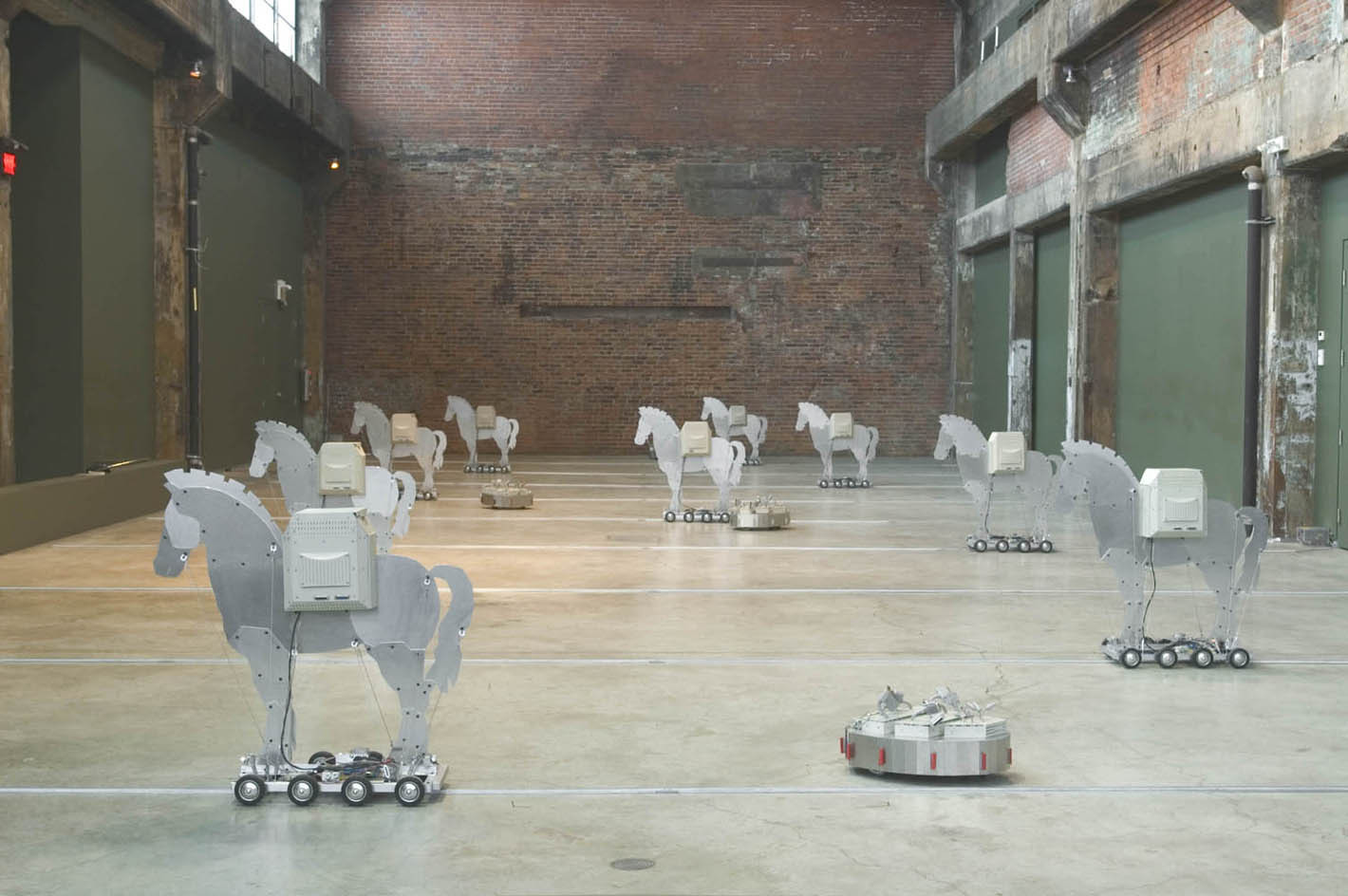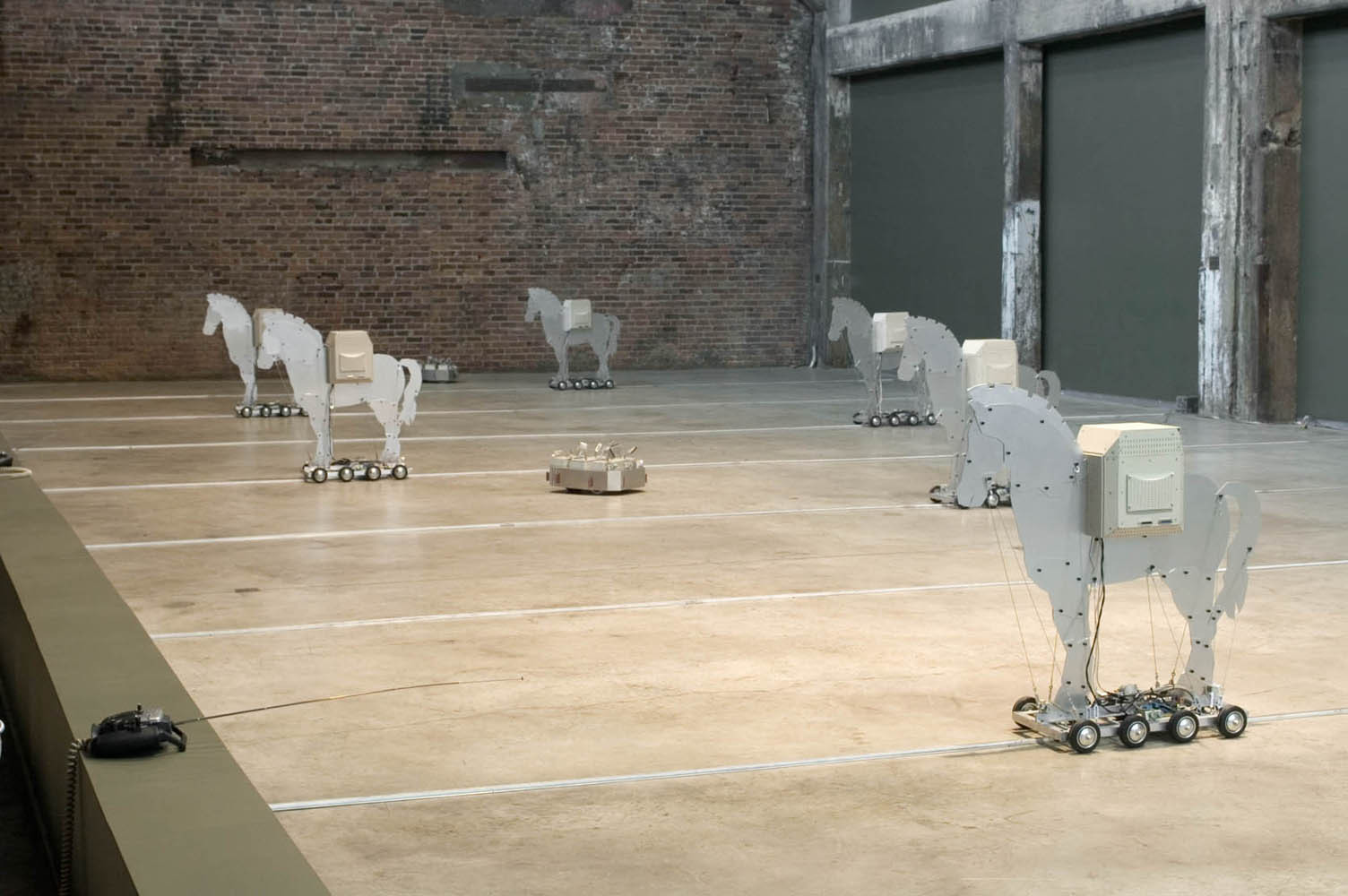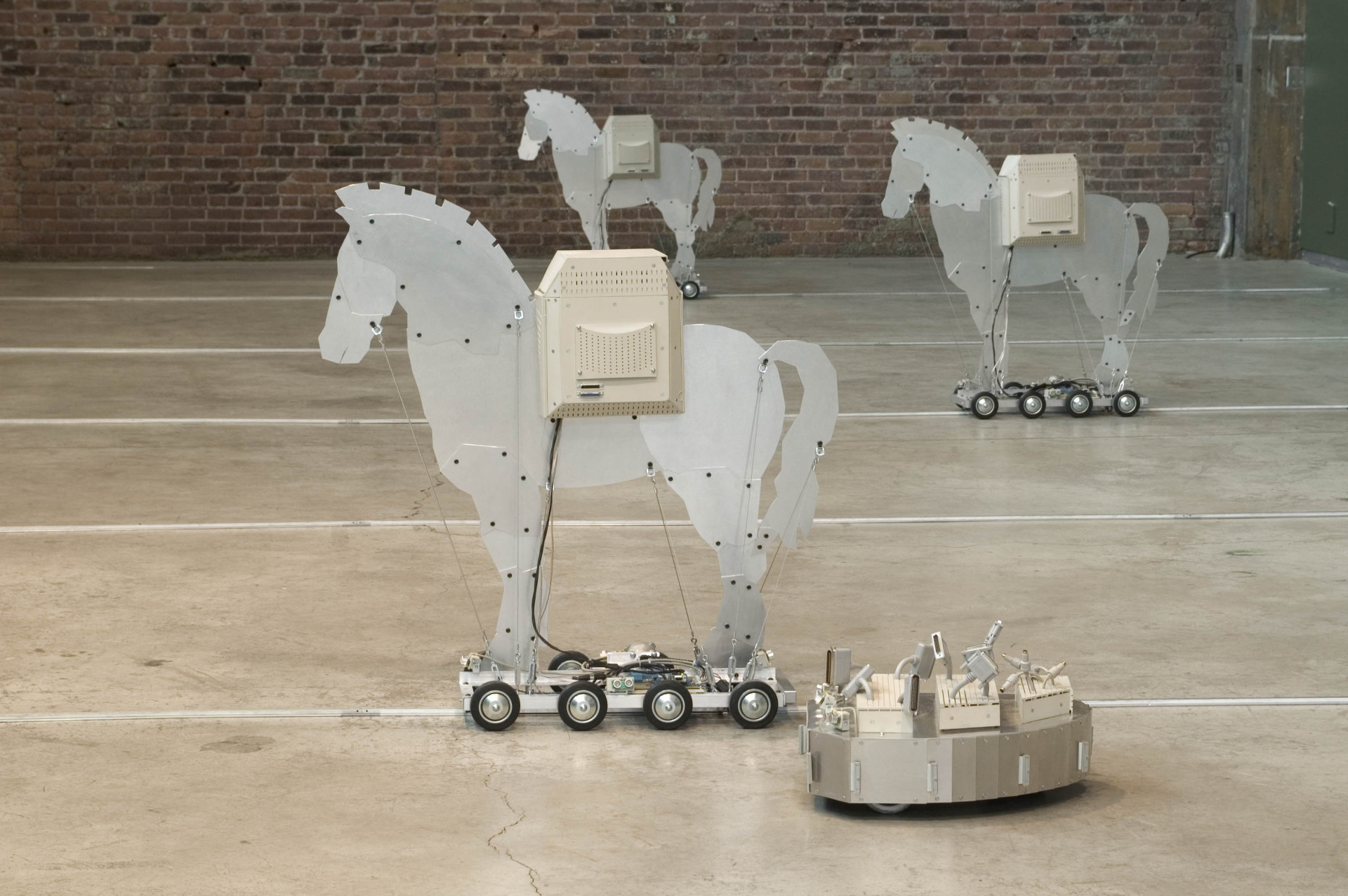


The Infrasense project comes from a first-time collaboration between Robert Saucier and KIT. Each of these artists possesses extensive experience in the production of roboticized audio exhibitions and Web exhibitions. At the Darling Foundry, this evolutionary work is amplified thanks to the dimensions of our show space.
First of all, the exposition addresses the universe of viruses, both biological and computerised. Boot up viruses, viruses of programs in all its sub-categories, macro viruses, Trojan horses, worms, polymorphous viruses, and bugs are all terms and metaphors most often used to refer to the activities of viruses on our computers, the Internet or in private networks. As for biological viruses, we all have some knowledge, even general, of the panoply of viruses that affect human beings. This robotic exhibition will be controlled in part by devices permitting real-time interaction via Web site.
Transforming the exhibition space into a veritable virus incubator, nine sound modules in the form of a Trojan horse, making a direct reference to the mythical war machine and the deception we are all familiar with, and four bugs (robotic vehicles) will serve as examples of our modern technical and organic scourges.
Robert Saucier is a Montreal artist born in New-Brunswick who specializes in robotic art and teaches sculpture at UQAM. On top of having received seven orders for sculptures for the Integration of the Arts into Architecture Program of the Ministère de la Culture et des Communications du Québec, his work has been shown in Canada, Ireland, England and France.
Robert Saucier KIT
Robert Saucier is a Montreal artist born in New-Brunswick who specializes in robotic art and teaches sculpture at UQAM. On top of having received seven orders for sculptures for the Integration of the Arts into Architecture Program of the Ministère de la Culture et des Communications du Québec, his work has been shown in Canada, Ireland, England and France.
KIT is a collective of artists from Canada, Australia and England from various professions who explore the theory and practice of interactive art. Their interests pertain to projects that initiate dialogue between “Internet space” and “real space.” The collective is implicated in the production of performances, expositions, publications, films and videos and CD ROMs. The projects of KIT have been presented in Mexico, the United States, Canada, England, Austria, Australia, the Netherlands, Ireland and New-Zealand.
